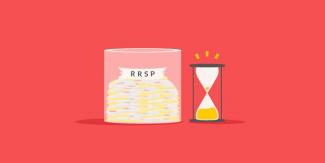
5 Things You Can Do with an RRSP (Besides Saving for Retirement)
With the March 3rd RRSP contribution deadline fast approaching, many Canadians are thinking about how to make the most of their Registered Retirement Savings Plan (RRSP). While RRSPs are best known for helping you save for retirement with tax-deferred growth, they offer a lot more flexibility than people realize. In fact, your RRSP can be a powerful tool for achieving various financial goals—some of which have nothing to do with retirement at all.
Here are five smart ways to use your RRSP beyond just retirement savings:
1. Buy Your First Home with the Home Buyers' Plan (HBP)
If you’re looking to buy your first home, your RRSP can help you get there faster. The Home Buyers' Plan (HBP) allows first-time homebuyers to withdraw up to $60,000 tax-free from their RRSPs to use toward a down payment. If you’re buying with a partner who also qualifies, that means you could access up to $120,000 combined—a major boost toward homeownership.
The catch? You have to repay the withdrawn amount over 15 years, starting the second year after your withdrawal. But since you’re essentially borrowing from yourself, it can be a great way to fund a home purchase without taking on additional debt.
2. Fund Your Education with the Lifelong Learning Plan (LLP)
Thinking about going back to school? Whether you want to advance your career or switch fields, the Lifelong Learning Plan (LLP) lets you withdraw up to $20,000 from your RRSP tax-free to help cover education costs.
The LLP allows withdrawals of up to $10,000 per year, and you have 10 years to repay the funds back into your RRSP. This can be a great alternative to student loans, especially if you want to continue growing your career without taking on high-interest debt.
3. Reduce Your Taxes (and Boost a Tax Refund)
One of the biggest perks of contributing to an RRSP is that your contributions reduce your taxable income, which can help lower the amount of tax you owe or even boost your refund. If you had a high-income year and expect to be in a lower tax bracket in the future, maxing out your RRSP contributions before the deadline can mean big tax savings now—and potentially a large refund.
4. Use Your RRSP to Help Fund a Sabbatical or Career Break
Taking time off for personal growth, travel, or a career transition? Your RRSP can play a role in funding that. Since withdrawals from an RRSP are taxed as income, they can be a useful tool for income smoothing if you take a planned break from work.
For example, if you expect to earn little or no income for a year, withdrawing from your RRSP while in a lower tax bracket could result in less tax paid on the withdrawal than if you took it out while working full-time. Just be mindful that withdrawing early means losing that contribution room permanently, so it should be done strategically.
5. Transfer Funds to a Spousal RRSP for Tax Efficiency
If you’re in a higher tax bracket than your spouse, contributing to a spousal RRSP can help balance your retirement income and reduce your household’s overall tax burden. Here’s how it works:
- You contribute to a spousal RRSP, and you get the tax deduction.
- The money grows tax-free within the account.
- In retirement, your spouse withdraws the funds (ideally at a lower tax rate).
This strategy helps couples split income in retirement, which can lead to lower overall taxes and more money in your pockets. Plus, it ensures both partners have retirement savings, even if one has a lower income.
Final Thoughts: Don’t Miss the RRSP Deadline
The March 3rd deadline is your last chance to maximize your RRSP contributions for the 2024 tax year. Whether you’re planning for retirement, buying a home, going back to school, or optimizing your tax strategy, your RRSP can do more than just sit and grow—it can be an active tool in your financial plan.
If you’re not sure how to make the most of your RRSP before the deadline, now is the time to review your options. Have questions? Let’s chat and make sure your RRSP is working for you.

